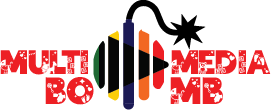Uncategorized
How to Reach Students changing and growing
The field of education is constantly changing and growing with technology. In this digital era, children grow up with computers from the time they are very young. In order to reach these children, educators need to adapt to technology in education and learn how to teach students using technological tools. It’s nearly impossible to avoid using technology and computers these days, especially when it comes to education. Most students have grown up with computers since birth or childhood and use them to learn too. It’s important to know how to use computers if you want to be an effective educator.
Getting a certificate in instructional technology is designed to improve classroom technology and integration skills and inspire teachers interested in improving their classroom instruction through technology integration. Beyond this, completing an instructional technology program also helps build resumes. Teachers interested in learning more about technology or enhancing their technology skills should strongly consider pursuing a certificate in instructional technology as a way to improve their careers and expand their knowledge.
Also read:
It’s important for teachers to know the foundations of educational technology. This will help form a basis for which to build upon. Learning about educational technology usually begins with understanding how a computer works, including hardware, operating systems, and networking for educators. This includes learning how to upgrade, repair, maintain, and troubleshoot computers for the purpose of providing positive learning environments and experiences for a diverse array of end users including teachers themselves. Even for teachers who aren’t interested in teaching technology, learning about the basic foundations of educational technology can be helpful for teachers and students alike.
Some courses show teachers everything from the beginning, including how to use a computer, so you don’t need any experience before taking any classes. Classes in the foundations of educational technology will focus on everything involving computers, even the details for beginners including how to use a printer. This can be extremely helpful for educators, especially those who have not had much or any practice and experience with computers. Whether you don’t own one or are not part of the digital generation, you can still learn by starting from scratch. This will advance both your personal and professional lives for the better because whether you teach technology or not, you will definitely need to use it one day if you continue with a career in education.
Because technology is so important, you should understand not only the basics, but also how to incorporate it into the classroom setting as well as within lessons and classroom activities. However, before that can be possible it’s necessary to understand the social and historical development of the use of technology in education. Learning about the evolution of technology and its applications to education and having an understanding of the social and historical development of the use of technology within K-12 education will take you much further than merely learning how to use a computer.
Also read:
Computer ethics, etiquette, the digital divide, equity regarding students with special needs, English as a second language, and socio-economic factors are also important themes to explore and discuss. Research can show you a lot about the equity issues concerning access and use of computers and related technologies.
Perhaps the best part about expanding your knowledge of instructional technology is the effect it has on learning for students. Project based and collaborative learning with computers are fun and effective ways for students to learn. This learning can be implemented in a regular classroom or in a computer laboratory, but either way, ethics, etiquette, and safety online for students and teachers should be of utmost concern at all times.


